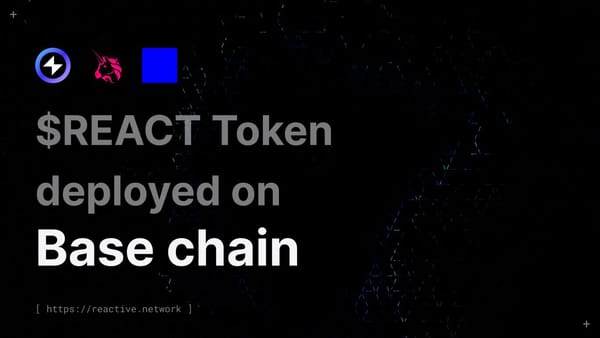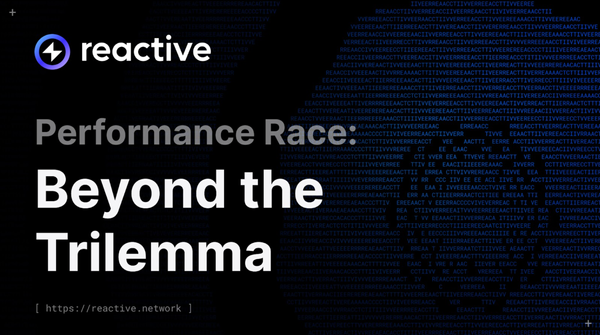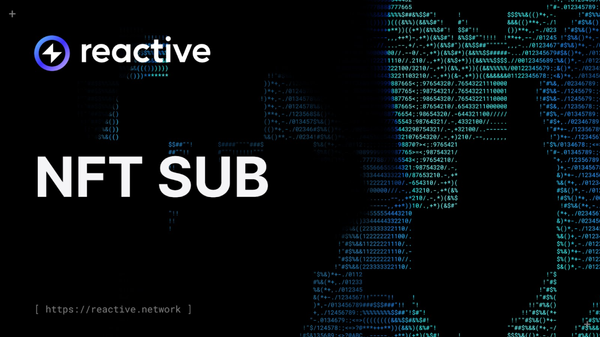Development Update: Reactive Network Executes First Reactive Transaction! ✅
Reactive Network has successfully completed its first reactive transaction, demonstrating the ease of automated cross-chain communication.
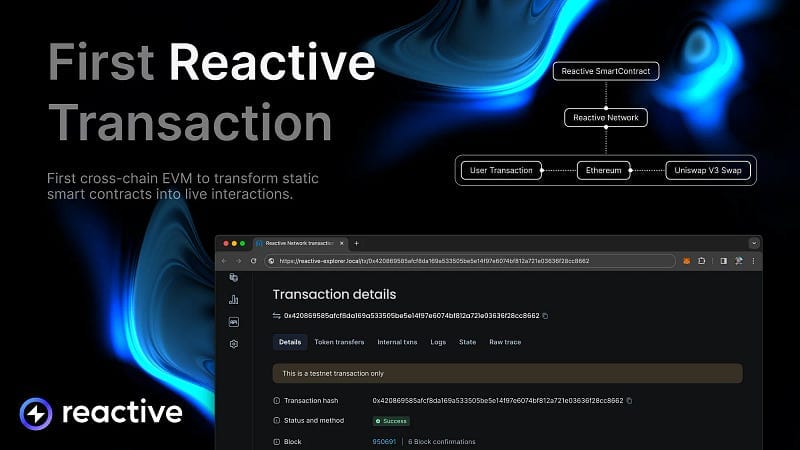
Reactive Network has successfully completed its first reactive transaction, demonstrating the ease of automated cross-chain communication.
We’re pleased to share the first of many milestone achievements for Reactive Network. The very first successful transaction utilizing Reactive Smart Contracts!
At the heart of this achievement is Reactive Network’s core principle: enabling fully on-chain reactions to events across different blockchain ecosystems.
This vision really started to take shape yesterday when Reactive Network responded to a Uniswap V3 swap of PARSIQ Token (PRQ), showcasing just one practical application of this new technology.
What Makes Reactive Network Unique?
Reactive Network, or simply Reactive, stands as a testament to the evolution of blockchain technology. With it, we aim to create a unified, trustless environment for multi-chain interactivity, significantly simplifying the process of developing decentralized applications (dApps) across various blockchain ecosystems.
The innovation of Reactive lies in its approach to solving the “Blockchain Oracle Problem” in an event-driven manner. By harnessing concepts from reactive programming and reactive extensions, Reactive Network introduces a new concept we call “Reactive Smart Contracts (RSCs)”. These contracts, distinct from traditional smart contracts, operate not on user interactions but on data flows from numerous blockchain ecosystems.
The First Reactive Transaction: A Closer Look
This first reactive transaction executed is a huge step in the development of Reactive Network. Responding to a Uniswap V3 swap of PRQ, you can see a hint of the potential practical utility for RSCs.
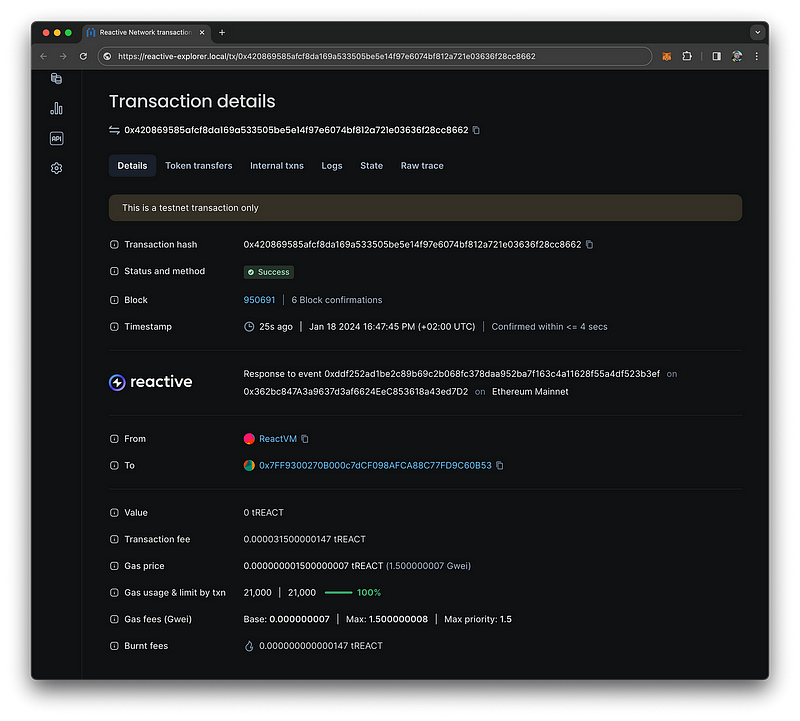
This event signifies not just a technical breakthrough but also paves the way for a new breed of interactive dApps and Smart Contracts that transcend their native ecosystems.
Daniil Romazanov, CTO of PARSIQ, reflects on this achievement:
“This first reactive transaction is an important milestone in the development of Reactive Network, marking the team’s dedication in achieving the goals set in front of it.
But it’s no time for us to relax, there are many issues to be solved and research to be conducted. The team is juggling many streams at the same time, including event consensus, relaying, proving mechanism and many more.”
Scalability and Efficiency: The Core Advantages
One of the most striking features of Reactive Network is its scalability potential, achieved through the parallelization of the Ethereum Virtual Machine (EVM). By executing Reactive Smart Contracts simultaneously, Reactive Network allows developers to offload data-driven computations from the main blockchain layer.
This shift not only minimizes gas consumption but also leverages state changes, which are comparatively cheaper. The result is a more efficient, scalable blockchain environment, poised to revolutionize the way we think about blockchain interactivity and dApp development.
Today’s successful reactive transaction is just the beginning for Reactive Network. As it continues to bridge the gaps between various blockchain ecosystems, we hope Reactive Network will stand at the forefront of a new era in blockchain technology, helping to unlock endless possibilities for developers and users alike in the realm of decentralized applications and beyond.


